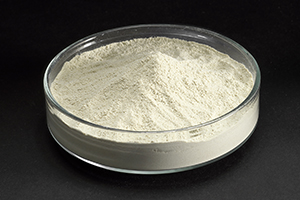 Attapulgite is a silicate mineral primarily composed of hydrous magnesium and aluminum silicate. It is a type of absorbent clay generally called “acid clay.” Unlike bentonite and kaolin clays, which are also absorbent clays, it does not become a gel-like compound when treated with electrolytic matter. In addition, its unique structure and “hollow needle” shape give it outstanding colloidal properties and absorbency.
Attapulgite is a silicate mineral primarily composed of hydrous magnesium and aluminum silicate. It is a type of absorbent clay generally called “acid clay.” Unlike bentonite and kaolin clays, which are also absorbent clays, it does not become a gel-like compound when treated with electrolytic matter. In addition, its unique structure and “hollow needle” shape give it outstanding colloidal properties and absorbency.
1. Composition and structure
Attapulgite clay contains 70-80% attapulgite, 10-15% montmorillonite, sepiolite, and other clays, 4-5% quartz, and 1-5% calcite and dolomite. The non-clay compounds are removed during processing, and the final product is between 60-70% attapulgite.
Its structure is a long parallel arrangement of silicon tetrahedrons and double oxide chains. Both sides of the double oxides are arrayed with 6-fold structures that bond with magnesium atoms.
This unique structure affords attapulgite two features: first, because of its chained structure, it does not expand in the way that other clays like montmorillonite do. The second feature is the way the molecules are arrayed in a needle-like, dehiscent shape parallel to the (110) surface that follows the Si-O-Si bonds. These needle-like crystals in attapulgite are about 1 micro meter long and 0.01micro meter in diameter.
2. Surface and absorbency
Attapulgite achieves high absorbency through its very large surface area. In its natural state, it absorbs about 200% of its own weight in water.
Features:
It has excellent absorbency, rheology, and consolidation.
It also has the qualities of a catalyst.
Uses:
Colloids/paints, boring slurry, gelling agents, stabilizers, adhesives, absorbing/decolorizing, purification, filtration agents, absorbing agents for oil bases, pet bedding, insecticides, granulation/binding/fertilizing
Chemical structure (values)
| SiO2 | 59.2% |
|---|---|
| Al2O3 | 10.5% |
| Fe2O3 | 3.6% |
| CaO | 1.4% |
| MgO | 10.6% |
| K2O | 1.0% |
| TiO2 | 0.5% |
| Ig.loss | 11.4% |


